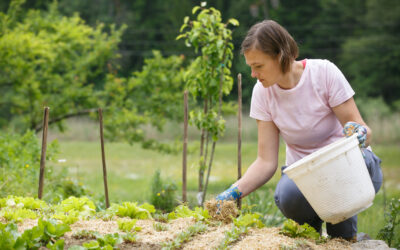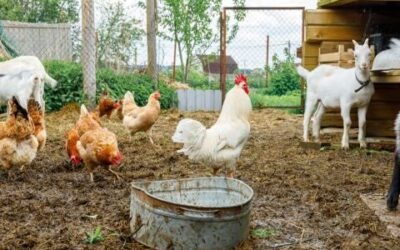
As winter fades away, the anticipation of spring gardening sets in. Early preparation is key to ensuring a flourishing and vibrant garden. By taking some time and preparing your garden for spring, you can improve your yields and give plants a better shot. Whether you’re a seasoned gardener or a novice with a green thumb, here are some easy and essential steps to prepare your garden for the upcoming spring season.
Clean Up and Clear Out
The simplest method to prepare gardens for spring is to get rid of old growths and unwanted materials. Start by clearing away the remnants of winter. Remove fallen leaves, debris, and any dead plant material that may have accumulated. This not only improves the aesthetic appeal of your garden but also helps prevent the harboring of pests and diseases.
Inspect and Repair Garden Tools
Before you dive into spring gardening, take inventory of your garden tools. Clean and sharpen your pruners, shears, and hoes. Check the condition of your watering cans, hoses, and other irrigation tools. Well-maintained tools make the gardening process more efficient and enjoyable.
Soil Preparation
Healthy soil is the foundation of a thriving garden. Garden preparation for spring involves digging into the ground and seeing how nutritious it is for your plants. Test your soil’s pH levels and amend it accordingly with organic matter, compost, or well-rotted manure. This enriches the soil with essential nutrients and improves its structure, providing an optimal environment for plant growth.
Plan Your Garden Layout
Take some time to plan the layout of your garden. Consider crop rotation, companion planting, and the specific needs of each plant. Planning ahead helps maximize space, sunlight, and water usage, leading to a more productive and harmonious garden.
Start Seeds Indoors
For certain plants, starting seeds indoors gives them a head start before the growing season begins. Research the recommended indoor start times for your desired crops and invest in quality seed-starting mixes, containers, and heat mats, if needed. This is especially beneficial for vegetables like tomatoes, peppers, and herbs.
Prune and Trim
Pruning is an essential task in preparing your garden for spring. Trim back dead or overgrown branches from shrubs and trees, promoting healthy growth and shaping the landscape. Additionally, prune perennial plants to encourage strong, new growth and remove any damaged or diseased sections.
Mulch Application
Mulching is a simple yet effective way to retain soil moisture, suppress weeds, and regulate soil temperature. Apply a layer of premium mulch, such as straw or wood chips, around your plants. This not only enhances the aesthetics of your garden but also contributes to the overall health of your plants.
Inspect and Treat for Pests
As temperatures rise, pests become more active. Inspect your garden for signs of pests, including eggs, larvae, or adult insects. Consider implementing natural pest control methods, such as introducing beneficial insects or using neem oil, to maintain a healthy balance in your garden.
Fertilize Thoughtfully
While adding nutrients to the soil is essential, it’s crucial to fertilize thoughtfully. Different plants have varying nutrient requirements, so tailor your fertilizer choices to meet their specific needs. When preparing your garden for spring, take the time to consider the plants, their genetics, and the types of chemicals they can handle. Avoid overfertilizing, as this can lead to nutrient imbalances and harm your plants.
Create a Compost Pile
Establish or replenish your compost pile with kitchen scraps, garden waste, and other organic materials. Compost is a valuable source of nutrients for your plants and improves soil structure. Regularly turning the compost accelerates the decomposition process, ensuring a nutrient-rich amendment for your garden.
Spring gardening is a delightful opportunity to breathe life back into your outdoor space. By following these easy and practical steps, you set the stage for a successful growing season. From cleaning up and soil preparation to starting seeds indoors and fostering a pest-resistant environment, these measures ensure that your garden not only survives but thrives in the upcoming springtime rejuvenation.




